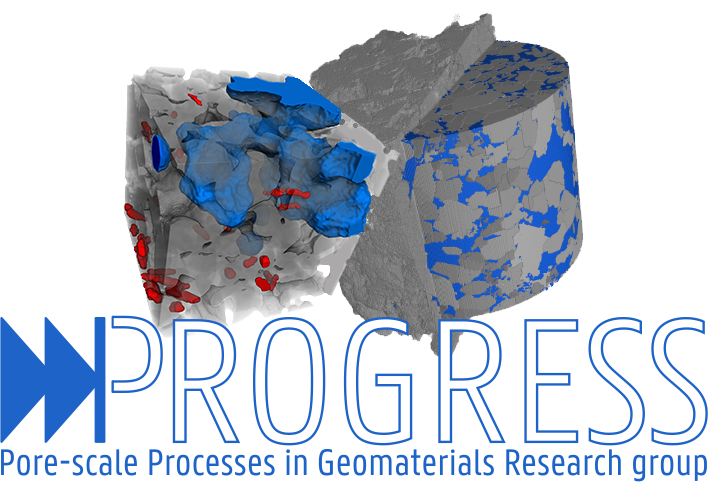
PProGRess (Pore-scale Processes in Geomaterials Research group) studies the various processes that occur inside the pore space of porous geomaterials. The group specializes in non-destructive imaging of the 3D structure of all kinds of materials, from the nano- to macro-scale. Our group wants to stretch the limits of real-time imaging of processes in the pore space of geomaterials, in terms of both temporal and spatial resolution.
PProGRess evolved from the “Sedimentary Geology and Engineering Geology” (SGIG) research group, and therefore still holds a lot of expertise in the field of natural building stones and the assessment of their properties. PProGress researchers are skilled in many traditional research techniques, e.g. optical microscopy, grain size analysis and technological testing of natural building stones.
PProGRess is part of the Ghent University Centre for X-Ray Tomography (UGCT) and of the department of Geology at Ghent University.
News
| 1 Januari 2025 | Welcom Robert, Parsa and Jesper |
| 22 October 2024 | Online webinar by Prof. Tom Bultreys |
| 4 October 2024 | Predoctoral FWO fellowships for Hanne and Soetkin |
| 1 September 2024 | Welcome Zhaoyuan |
| 17 April 2024 | Workshop afternoon at Wetsus |
| 26 March 2024 | Guided city walk in Ghent |
| 16 January 2024 | Winter school on Digital Environmental Geosciences at the University of Orléans |
| 26 November 2023 | Lecture by Tom Bultreys at Science day |